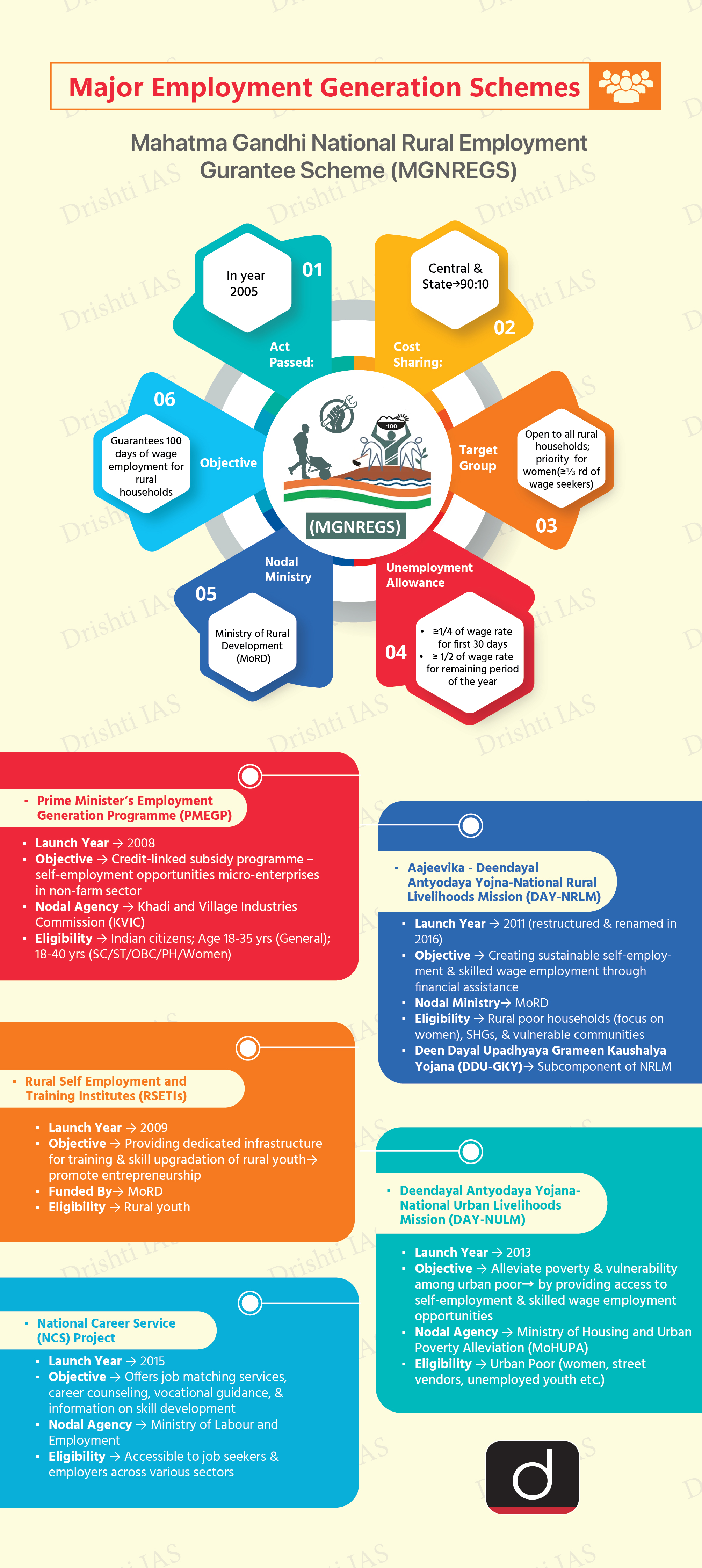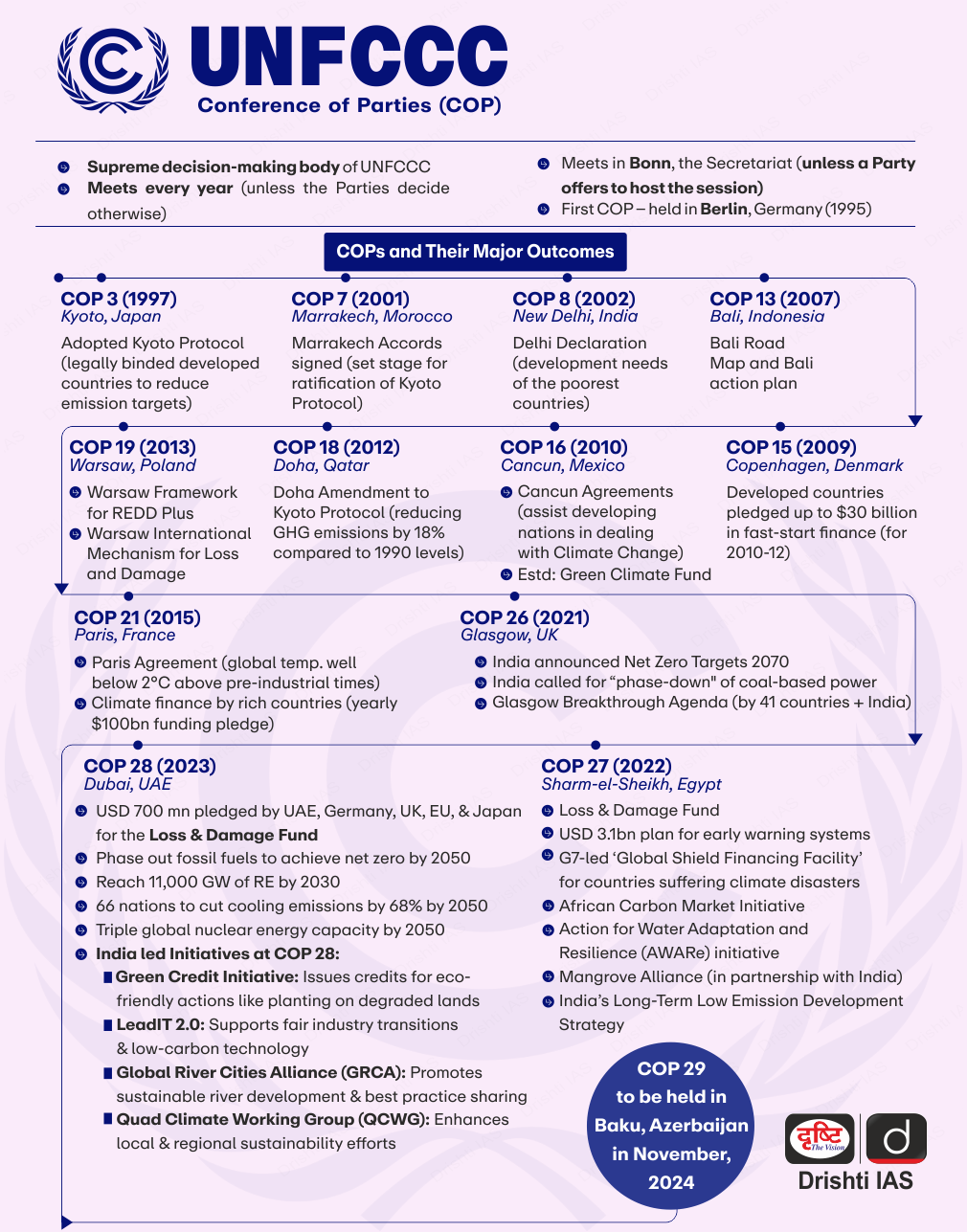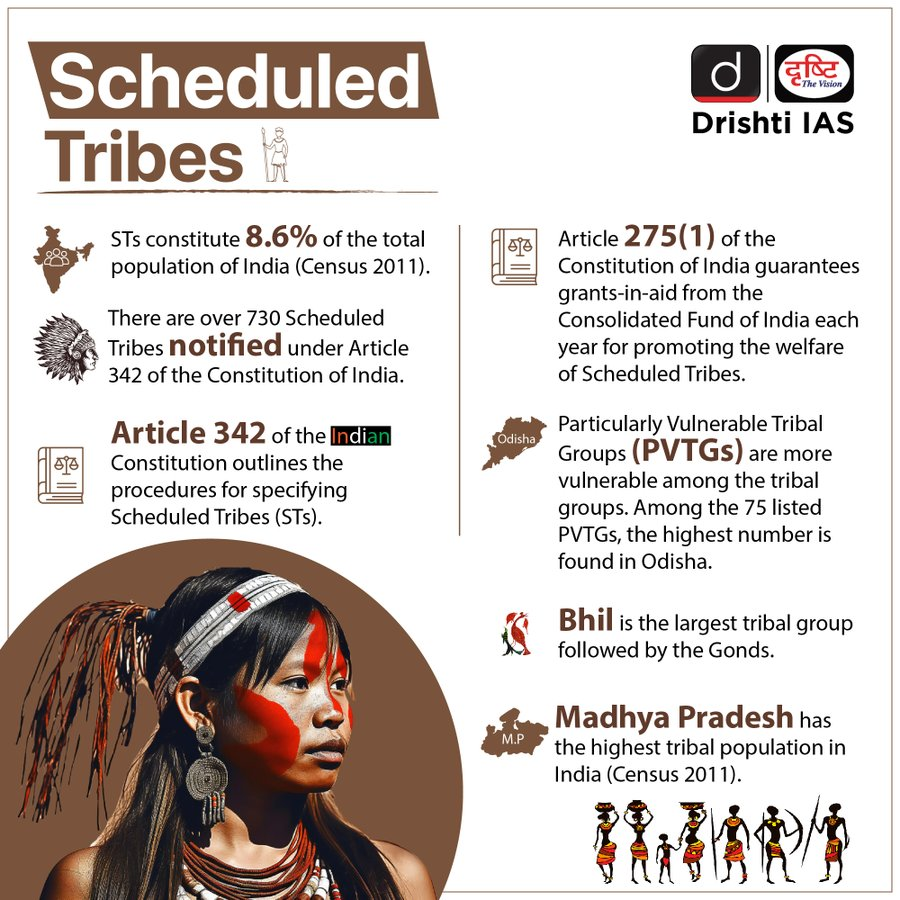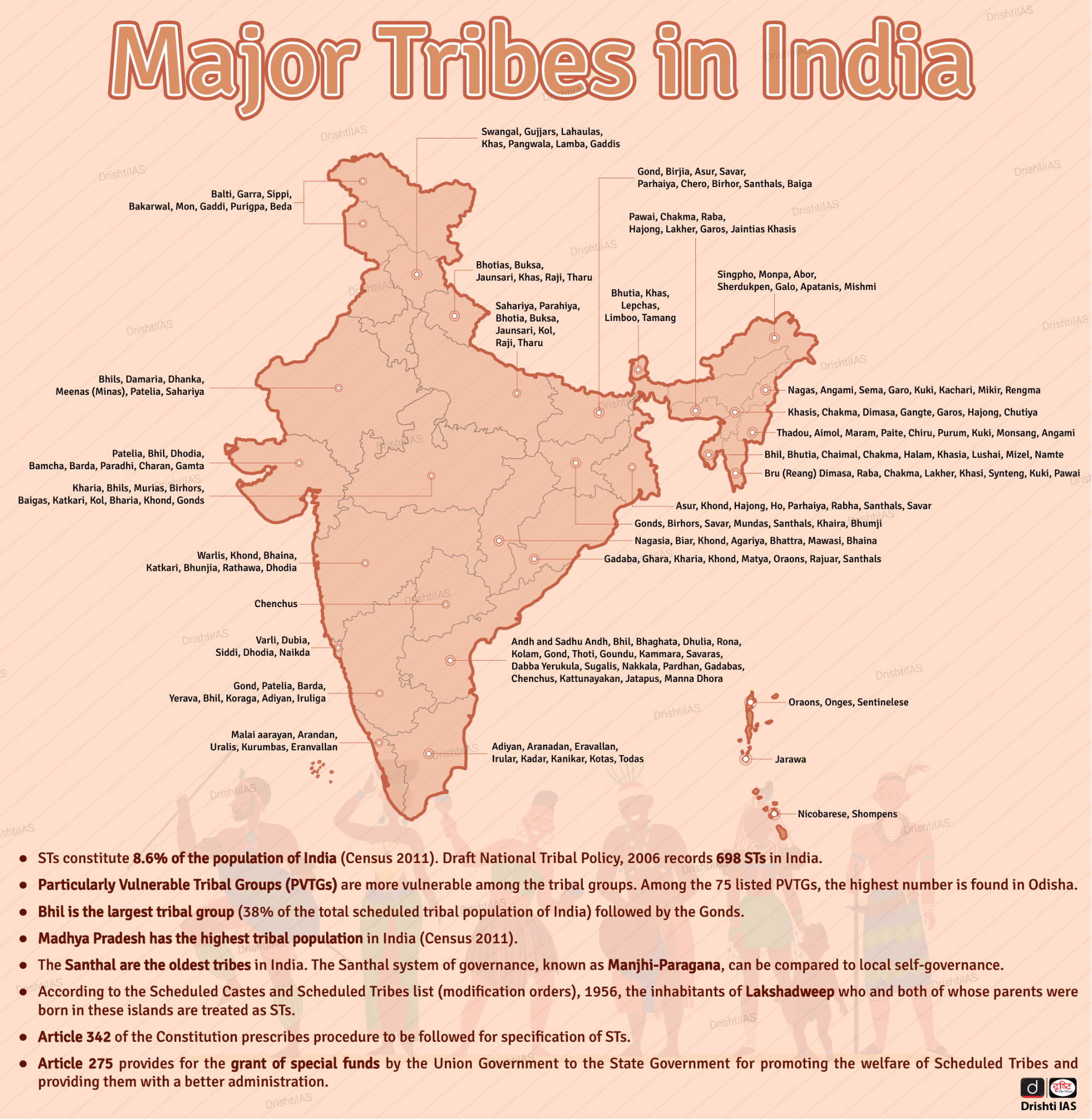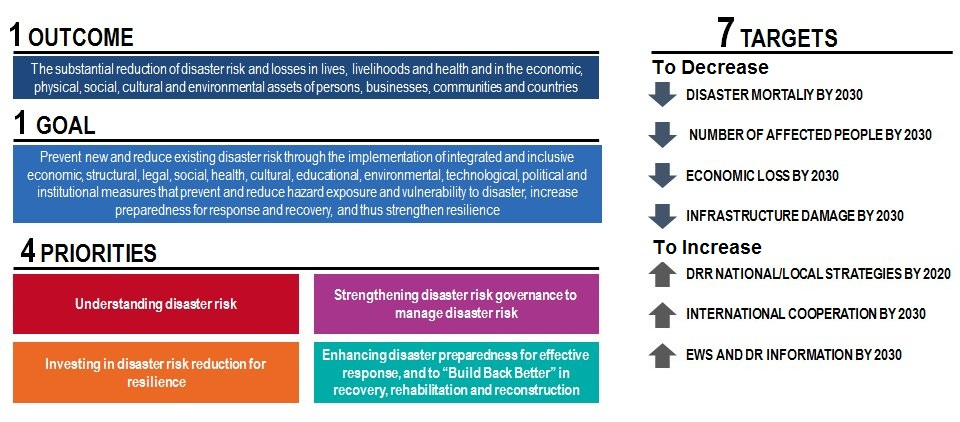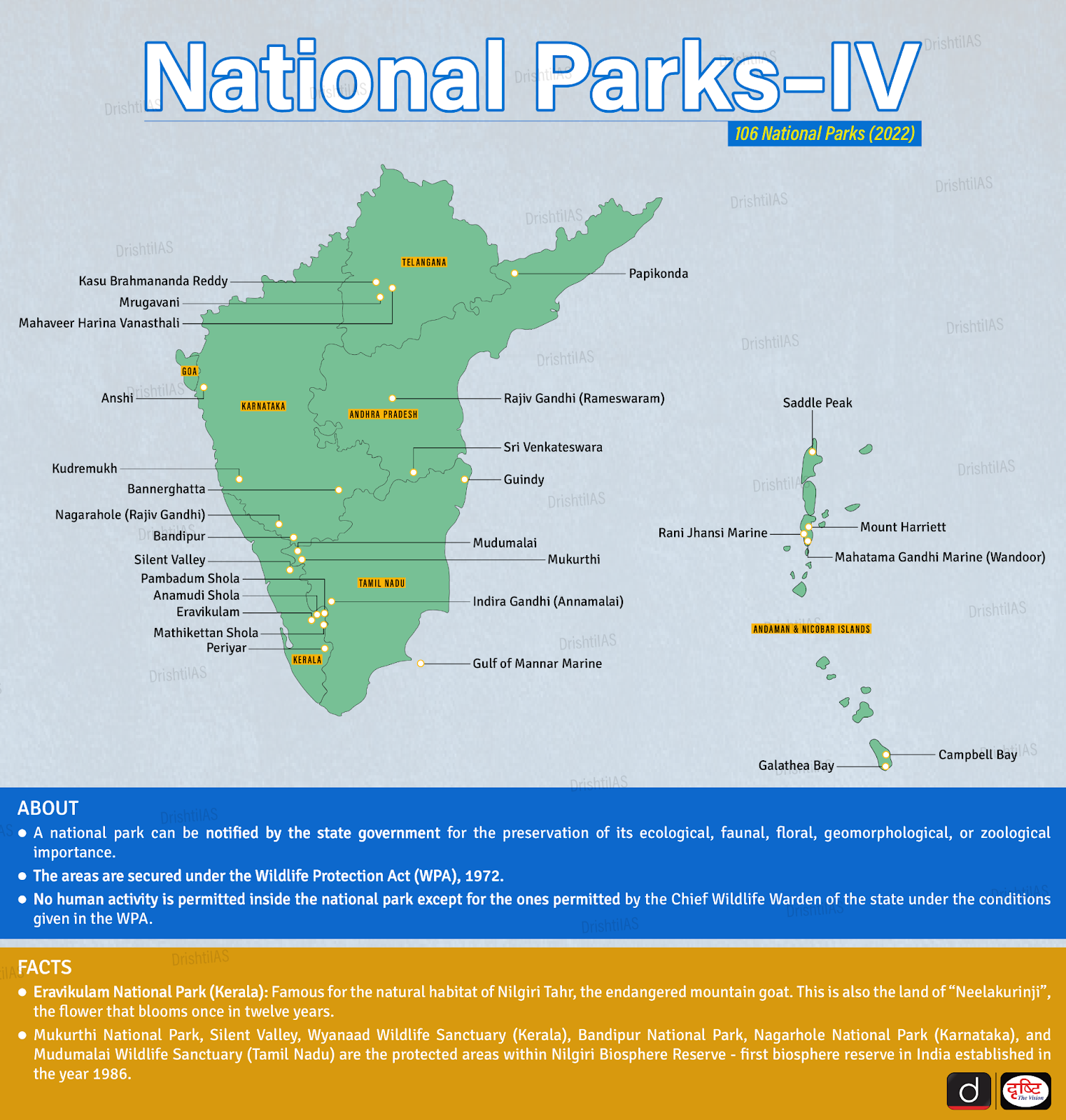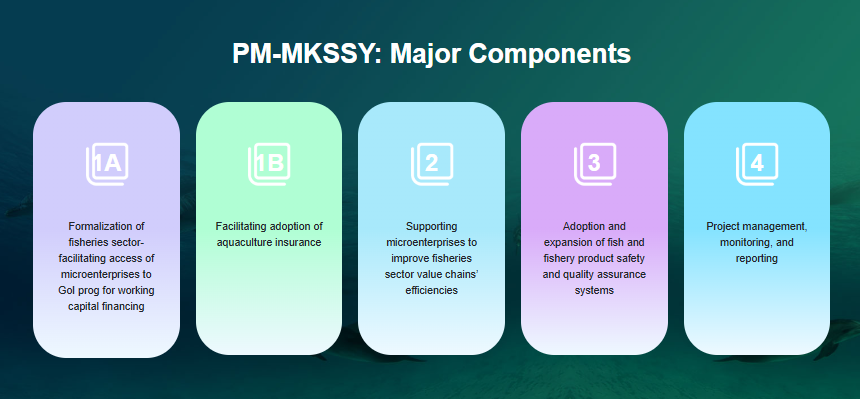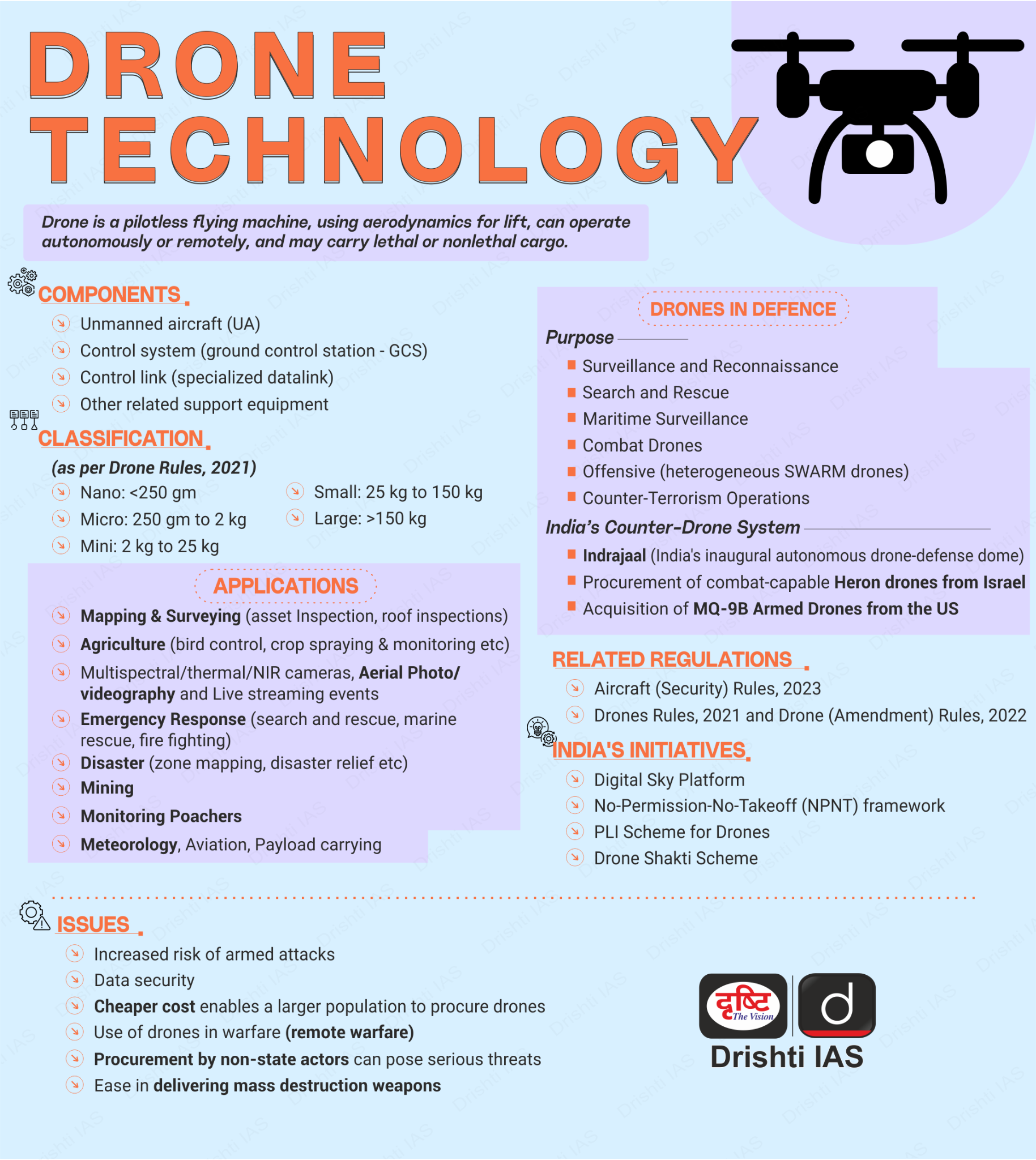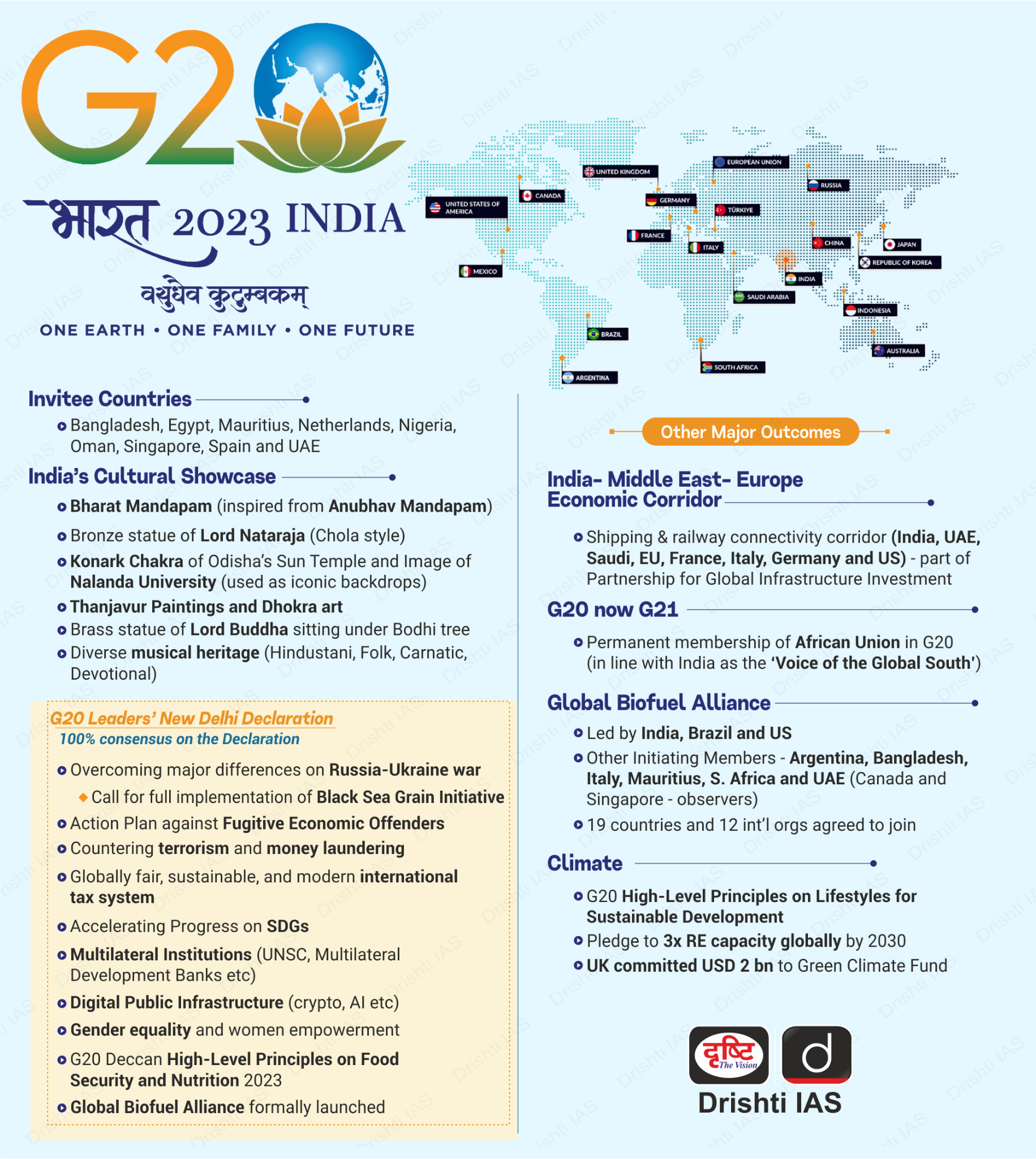Infographics
Biodiversity & Environment
Climate Change Impact on Small Island Developing States
For Prelims: COP27 (2022), New Loss And Damage Fund, Climate Change, Hurricane Maria, Debt-To-Gdp Ratio, COP29
For Mains: Significance of Climate Financing in Helping Developing Nations.
Why in News?
At UNFCCC COP27 (2022) in Sharm El Sheikh, a new loss and damage fund was created to help climate-vulnerable nations, particularly Small Island Developing States (SIDS).
- Despite the agreement, wealthier nations – the largest carbon emitters, have failed to fulfill their financial commitments, leaving many vulnerable countries without the necessary support.
Small Island Developing States (SIDS)
- Small Island Developing States (SIDS) refer to a group of small island nations and territories that face shared challenges in sustainable development, alongside significant social, economic, and environmental vulnerabilities.
- Some of SIDS include the Maldives, Seychelles, Marshall Islands, Solomon Islands, Suriname, Mauritius, Papua New Guinea, Vanuatu, Guyana, and Singapore.
- SIDS are primarily located in three major geographical regions: the Caribbean, the Pacific, and the Atlantic, Indian Ocean & South China Sea (AIS) regions.
- At the United Nations Conference on Environment and Development 1992, SIDS were formally recognized as a special case due to their unique environmental and developmental challenges.
How is Climate Change Affecting SIDS?
- Increased Vulnerability of SIDS: SIDS suffer 3-5 times more climate-related losses relative to government revenues compared to other countries.
- Even wealthier SIDS, like Barbados and the Bahamas, face four times more loss than other high-income nations.
- Projected losses from extreme weather will reach USD 75 billion annually by 2050 for SIDS, under a 2°C warming scenario.
- Direct Impacts: Climate change-induced extreme weather events cause significant damage to homes, infrastructure, and public services, as well as loss of life.
- For instance, Cyclone Winston in 2016 caused extensive flooding in Fiji, resulting in the loss of 44 lives and significant economic disruptions.
- Indirect Impacts: Recovery costs and diverted resources lead to slow economic recovery, with sectors like tourism and agriculture severely impacted.
- Economic growth is delayed or reversed, with increased recovery expenses and reduced income generation. For example, Fiji's GDP growth was reduced by 1.4% due to the 2016 cyclone.
- Small island states face prolonged fiscal difficulties, as recovery costs exacerbate national debt. Dominica's recovery from Hurricane Maria has left it with 150% debt-to-GDP ratio.
- Cost of Climate Change: USD 141 billion in direct and indirect impacts on SIDS from 2000 to 2020, averaging USD 2,000 per person. However, some countries face even higher per capita costs (e.g., Dominica lost USD 20,000 per person after Hurricane Maria).
- 38% of the total losses are attributable to climate change, according to extreme event attribution studies.
What are Major Initiatives Taken to Mitigate Impact on Small Island Developing States?
- Alliance of Small Island States (AOSIS): It is an intergovernmental organization that advocates for small island nations and influences international climate policy.
- Barbados Programme of Action: The Barbados Programme of Action (1994), established at UN Global Conference on the Sustainable Development of SIDS, held at Barbados in 1994, addresses the specific vulnerabilities of SIDS to climate change, sea-level rise, and climate variability.
- Small Island Developing States Accelerated Modalities of Action (SAMOA) Pathway: SAMOA Pathway, adopted in 2014 at the Third International Conference on Small Island Developing States, aims to address the unique challenges faced by SIDS, supporting their development through international cooperation and climate action.
- Coalition for Disaster Resilient Infrastructure (CDRI): CDRI is a global partnership launched in 2019 under the leadership of the Government of India and with the support the UN Office for Disaster Risk Reduction (UNDRR) to boost infrastructure resilience to climate and disaster risks, promoting sustainable development.
- Infrastructure Resilience Accelerator Fund (IRAF): Founded with the backing of UNDP and UNDRR, with a particular emphasis on developing countries and SIDS, the IRAF Fund (USD 50 million) supports disaster resilience, focusing on developing countries and SIDS.
- India's Assistance for SIDS: Overall, India has committed a total of USD 70 million in project aid, along with US$ 350 million in concessional loans and credit lines to SIDS, while these nations have made significant efforts towards sustainable development, especially in combating climate change.
Why do Developed Countries Need to Pay Up?
- Financial Responsibility: Wealthy, industrialized nations, which are the largest historical carbon emitters, bear the primary responsibility for financing climate change mitigation and adaptation in vulnerable countries.
- Insufficient Current Funding: Current financial pledges are not sufficient to address the scale of loss and damage already occurring, let alone prepare for future impacts.
- The loss and damage fund needs billions more annually, especially for the most vulnerable countries like SIDS.
- Urgency for a Marshall Plan-Scale Response: Given the severity of impacts, the fund should be designed with the ambition and scale of a “modern Marshall Plan”, ensuring that affected nations have adequate resources to recover and adapt.
- The Marshall Plan was a US-led initiative after World War II that provided extensive economic aid to help rebuild Western Europe, promoting economic recovery, political stability, and long-term growth.
- Effective Fund Utilization: The loss and damage fund should provide budget support mechanisms, ensure rapid disbursement for timely recovery in agriculture and tourism, and offer concessional finance to avoid increasing debt burdens.
- Failure to Meet Climate Commitments: Developed nations have a history of failing to meet climate finance targets and emissions reduction commitments.
- SIDS are responsible for less than 1% of global greenhouse gas emissions but are among the most affected by climate change impacts
- As climate impacts become more severe and frequent, future climate finance targets need to be sufficiently ambitious to match the scale of challenges SIDS face.
- Induced Economic Loss (IELD) and the FRLD: Indirect economic losses due to extreme weather events may have totaled USD 107 billion from 2000 to 2022, with 36% attributable to climate change.
- The Fund for Responding to Loss and Damage (FRLD) which aims to provide financial support to vulnerable nations, particularly SIDS and developing countries, to address climate change impacts like loss, damage, and recovery, should also address these indirect losses and ensure rapid recovery for vulnerable economies.
- Growing Fiscal Stress: The cumulative losses from both direct and indirect impacts could reach USD 75.2 billion annually by 2050 under a 2°C warming scenario.
- Developed countries must step up their financial contributions, ensuring funds are available to address both immediate impacts and long-term economic challenges in SIDS.
Conclusion
The creation of the loss and damage fund at UNFCCC COP27 marks a critical step in supporting SIDS. However, wealthy nations must fulfill their financial commitments to provide adequate resources for climate resilience, addressing both direct and indirect impacts of climate change on these vulnerable nations, ensuring their sustainable development.
|
Drishti Mains Question: What are the key financial challenges faced by Small Island Developing States (SIDS) in responding to climate change? Discuss the role of international financing in supporting these countries. |
UPSC Civil Services Examination Previous Year Question (PYQ)
Prelims:
Q. “Momentum for Change: Climate Neutral Now” is an initiative launched by (2018)
(a) The Intergovernmental Panel on Climate Change
(b) The UNEP Secretariat
(c) The UNFCCC Secretariat
(d) The World Meteorological Organisation
Ans: (c)
Mains:
Q. ‘Climate change’ is a global problem. How India will be affected by climate change? How Himalayan and coastal states of India will be affected by climate change?

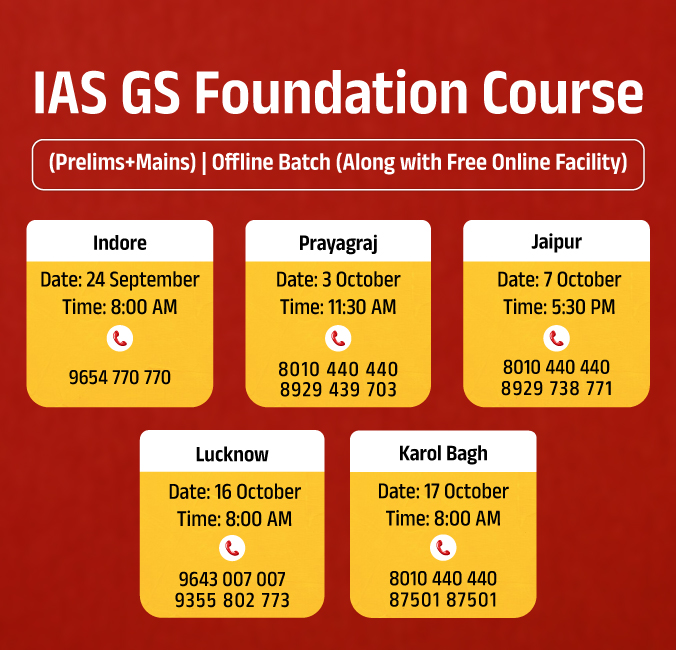
Governance
Livelihood Promotion Among Tribals
For Prelims: Multidimensional Poverty Index (MPI), National Food Security Act, 2013 (NFSA), National Family Health Survey (NFHS-5) 2019-21, Stunting, Wasting, Underweight, Subsistence Farming, International Fund for Agricultural Development, Odisha Tribal Development Project (OTDP), UNICEF, World Food Programme, Community Forest Rights (CFR), Tribal Cooperative Marketing Development Federation of India (TRIFED), PDS, Microfinance, Local Governance Bodies.
For Mains: Challenges associated with livelihood of tribals. Measures needed for tribal livelihood promotion.
Why in News?
The recent Mango kernel consumption deaths in Odisha's Kandhamal district highlight a severe livelihood crisis among tribal communities.
- Mango kernels, the seeds left after juice extraction, contain cyanogenic glycosides like amygdalin, which release toxic hydrogen cyanide when consumed.
Why Tribals Rely on Unsafe Consumption for Livelihood?
- Severe Poverty: Tribal communities depend on wild and foraged foods mainly because of widespread and long-standing poverty.
- According to the global Multidimensional Poverty Index (MPI), 65 million of the 129 million tribals are living in multidimensional poverty.
- Food Insecurity: The geographical isolation, inadequate infrastructure, and logistical challenges have made it difficult for tribal communities to access regular, nutritious food supplies under National Food Security Act, 2013 (NFSA).
- Malnutrition: Many tribal families do not have enough access to food staples like grains, pulses, oils, or fortified items.
- As per the National Family Health Survey (NFHS-5) 2019-21 report, the prevalence of stunting, wasting and underweight among tribal children stands at 40.9%, 23.2% and 39.5% respectively.
- Lack of Forest Rights: Tribals have historically relied on forests for their livelihoods, gathering wild foods, and subsistence farming.
- However, displacement, deforestation, loss of forest rights, and restricted access to land pushed them into extreme poverty.
- Economic Exploitation: Some tribals are forced to resort to mortgaging their welfare cards (e.g., ration cards) to local moneylenders in exchange for short-term debt relief.
- These exploitative practices often deprive the rightful recipients of government benefits, forcing them further into debt.
- Survival in Extreme Conditions: During periods of extreme poverty, food scarcity, and seasonal droughts, tribal families are forced to rely on unsafe food sources to survive amidst worsening socio-economic conditions.
- Insufficient Institutional Support: The impact of International Fund for Agricultural Development-supported Odisha Tribal Development Project (OTDP), UNICEF’s Household Food Security Project in vulnerable blocks, and the World Food Programme's community-based anti-hunger projects in remote tribal areas has been limited.
What are Government Initiatives for Tribals?
How can Livelihood of Tribals be Improved?
- PDS Innovations: Expanding the system to include essential nutritious staples (e.g., pulses, oils) can help bridge the nutrition gap in marginalised tribal communities.
- Door-to-door delivery of PDS rations ensures that remote communities have consistent access to vital food supplies.
- Enhanced Access to CFR: Enhanced Access to Community Forest Rights (CFR) allows tribes to exercise control over forest resources, promoting sustainable harvesting of minor forest produce (MFP).
- Fair Market Prices: Ensuring that tribal communities receive fair prices for MFPs, like honey, tamarind, wild mushrooms, and mango kernels, is crucial for economic self-reliance.
- Government initiatives, particularly those supported by organisations like the Tribal Cooperative Marketing Development Federation of India (TRIFED), can facilitate market access by connecting tribal producers to larger markets, ensuring fair compensation.
- Financial Protection: Regulating microfinance practices to prevent predatory lending can protect tribal communities from exploitative loans and debt cycles.
- Leveraging Past Lessons: Reflecting on the successes and shortcomings of past initiatives (e.g., OTDP, PDS innovations) is essential to refine future approaches and build on effective strategies.
- Strategic Partnerships: Collaborative efforts between district administrations, local governance bodies, non-profits, and civil society organisations are vital for building community resilience.
- Value Addition: Promoting the processing of MFPs, such as converting mango kernels into valuable products for confectionery, cosmetics, and pharmaceuticals, can provide tribal communities with diverse income streams.
Conclusion
The recent deaths from mango kernel consumption in Odisha underscore the severe livelihood crisis among tribal communities, driven by poverty, food insecurity, and economic exploitation. Strengthening forest rights, enhancing market access, fair pricing for minor forest produce, targeted government initiatives, and strategic partnerships can collectively uplift and empower tribal populations sustainably.
|
Drishti Mains Question: Q. Discuss the factors contributing to the food insecurity crisis among India's tribal communities |
UPSC Civil Services Examination, Previous Year Question (PYQ)
Prelims
Q. At the national level, which ministry is the nodal agency to ensure effective implementation of the Scheduled Tribes and Other Traditional Forest Dwellers (Recognition of Forest Rights) Act, 2006?
(a) Ministry of Environment, Forest and Climate Change
(b) Ministry of Panchayati Raj
(c) Ministry of Rural Development
(d) Ministry of Tribal Affairs
Ans: (d)
Q. Consider the following statements about Particularly Vulnerable Tribal Groups (PVTGs) in India: (2019)
- PVTGs reside in 18 States and one Union Territory.
- A stagnant or declining population is one of the criteria for determining PVTG status.
- There are 95 PVTGs officially notified in the country so far.
- Irular and Konda Reddi tribes are included in the list of PVTGs.
Which of the statements given above are correct?
(a) 1, 2 and 3
(b) 2, 3 and 4
(c) 1, 2 and 4
(d) 1, 3 and 4
Ans: (c)
Mains
Q. What are the two major legal initiatives by the State since Independence addressing discrimination against Scheduled Tribes (STs)? (2017)
Q. Why are the tribals in India referred to as ‘the Scheduled Tribes’? Indicate the major provisions enshrined in the Constitution of India for their upliftment. (2016)


Biodiversity & Environment
Sendai Framework and India's Commitment to DRR
For Prelims: 2015 Sendai Framework, Asian Disaster Preparedness Centre, CDRI, India's Commitment to DRR, G-20 Disaster Risk Reduction (DRR), Sustainable Development Goals
For Mains: India’s Role in Global DRR, Initiatives for Disaster Risk Reduction, Major Challenges for India in DRR, Major committee recommendations for disaster risk reductions.
Why in News?
India’s steadfast commitment in global disaster risk reduction (DRR) efforts was highlighted during the G-20 Disaster Risk Reduction (DRR) Working Group ministerial meeting in Belem, Brazil..
- The meeting emphasized India’s commitment to the 2015 Sendai Framework, aimed at reducing disaster risks and losses.
Note:
- The G-20 Disaster Risk Reduction (DRR) Working Group, formed by G20 countries, aims to integrate risk reduction measures into public and private sector investment decisions and policy making to reduce existing risk, prevent the creation of new risk and, ultimately, build resilient economies, societies, and natural systems.
What is Sendai Framework (2015-2030)?
- About: A UN-backed framework that focuses on reducing disaster risks through measures such as better preparedness, disaster risk financing, and sustainable development.
- It was adopted at the Third United Nations World Conference on Disaster Risk Reduction, held in 2015 in Sendai, Miyagi, Japan.
- It is the successor instrument to the Hyogo Framework for Action (HFA) 2005-2015: Building the Resilience of Nations and Communities to Disasters.
- The framework recognizes that the State has the primary role to reduce disaster risk but that responsibility should be shared with other stakeholders including local government, the private sector and other stakeholders.
- It was adopted at the Third United Nations World Conference on Disaster Risk Reduction, held in 2015 in Sendai, Miyagi, Japan.
- Implementing Organisation: United Nations Office for Disaster Risk Reduction (UNDRR) is tasked to support the implementation, follow-up and review of the Sendai Framework.
- Role in 2030 Agenda: The Sendai Framework works hand in hand with the other 2030 Agenda agreements, including The Paris Agreement (2015), the Addis Ababa Action Agenda on Financing for Development (2015), the New Urban Agenda, and ultimately the Sustainable Development Goals.
Note:
- The Hyogo Framework for Action (HFA) was the global blueprint for disaster risk reduction efforts between 2005 and 2015. It was adopted in 2005 at the second World Conference on Disaster Reduction, held in Kobe, Hyogo, Japan.
- In 1994 the first World Conference on Natural Disaster Reduction was held in Yokohama, Japan.
- Its goal was to substantially reduce disaster losses by 2015 - in lives, and in the social, economic, and environmental assets of communities and countries.
What Role has India Played in DRR Initiatives?
- Global Level:
- Initiative at G-20: During its G-20 presidency in 2023, India initiated the formation of a Disaster Risk Reduction Working Group, marking a milestone in global collaboration for disaster resilience.
- In its G20 Presidency, India’s enunciated its proactive approach on the issue on the basis of the five priorities
- Early warning systems
- Disaster-resilient infrastructure
- Disaster risk reduction financing
- Resilient recovery
- Nature based solutions
- In its G20 Presidency, India’s enunciated its proactive approach on the issue on the basis of the five priorities
- Coalition for Disaster Resilient Infrastructure (CDRI): India’s led CDRI focuses on building disaster-resilient infrastructure and enhancing international cooperation.
- It now comprises 40 countries and seven international organizations.
- Bilateral and Multilateral Engagements: India's participation in troika meetings with Brazil and South Africa, along with bilateral discussions with countries like Japan, Germany, and South Korea, demonstrates India’s growing influence in shaping global disaster risk reduction policies.
- Asian Disaster Preparedness Centre (ADPC): ADPC is an autonomous international organisation focused on disaster risk reduction and climate resilience in Asia and the Pacific region. India took over as Chair of the Asian Disaster Preparedness Centre (ADPC) for 2024-25.
- It was founded by India and eight neighboring countries: Bangladesh, Cambodia, China, Nepal, Pakistan, Philippines, Sri Lanka, and Thailand.
- Initiative at G-20: During its G-20 presidency in 2023, India initiated the formation of a Disaster Risk Reduction Working Group, marking a milestone in global collaboration for disaster resilience.
- National Level:
- Disaster Management Act of 2005: The DM Act was passed by the government of India in 2005 for the efficient management of disasters and other matters connected to it’.
- The NDMA was formally constituted on 27th September 2006, in accordance with the Disaster Management Act, 2005 with PM as its Chairperson and nine other members, and one such member to be designated as Vice-Chairperson.
- National Disaster Response Force (NDRF) is the world’s largest rapid reaction force dedicated to disaster response. It was formed in 2006 under the DM Act, 2005 with the purpose of a specialised response to natural and man-made disasters.
- National Disaster Management Plan (NDMP): National Disaster Management Plan (NDMP) defines the roles and responsibilities of various stakeholders including Central Ministries/ Departments, State Governments, UT Administrations, District Authorities and local self Governments.
- The NDMP of 2016 was the world’s first ever national plan explicitly aligned with the Sendai Framework. The revised NDMP was introduced in 2019.
- Disaster Management Act of 2005: The DM Act was passed by the government of India in 2005 for the efficient management of disasters and other matters connected to it’.
What are the Major Challenges for India in DRR?
- There are significant gaps in preparedness on various aspects of risk management, particularly for catastrophic disasters like major earthquakes and floods. Poor coordination between various government agencies and stakeholders can lead to inefficiencies in disaster response and recovery.
- India’s capacity to manage disaster risk is challenged by its size and huge population. The country is likely to have the greatest exposure of any nation in the world to extreme weather and natural disasters by 2030.
- Many regions lack the necessary infrastructure to withstand natural disasters, leading to greater damage and loss. The northeast region is most at risk from earthquakes and lacks seismically secure infrastructure and buildings. It is also vulnerable to landslides, floods and erosion.
- There is often a lack of awareness and preparedness among the public, which hampers effective disaster response.
- Financial and human resources for disaster management are often insufficient, affecting the implementation of risk reduction measures.
What are the Major Committee Recommendations for Disaster Risk Reductions?
- Standing Committee Report on Central Assistance for Disaster Management and Relief 2019:
- Scale of Relief: Expand State Disaster Response Fund (SDRF) and the National Disaster Response Fund (NDRF) norms to cover all major disaster expenses.
- Disaster Mitigation Fund: A separate Disaster Mitigation Fund to be operationalised for undertaking permanent mitigation measures in disaster-prone states.
- Funding Mechanism: Allocate 10% of centrally sponsored funds be especially earmarked for permanent restoration of damaged structures.
- Reforms Recommended by 2nd ARC:
- Suggested District Disaster Management Plan for long term mitigation and Emergency Response.
- Separate provision in the Constitution for Disaster.
- Disaster Management should be introduced as a subject in education curriculums.
- National Policy on Disaster Management to be introduced.
- State Governments should maintain primary responsibility for disaster/crisis management, with the Union Government providing support.
|
Drishti Mains Question "Discuss India's role in global disaster risk reduction, especially through the G-20 framework, and evaluate how its priorities align with the Sendai Framework 2015-30. What challenges does India face in implementing effective disaster risk reduction domestically? |
UPSC Civil Services Examination Previous Year Question (PYQ)
Prelims:
Q. In which one of the following groups are all the four countries members of G20? (2020)
(a) Argentina, Mexico, South Africa and Turkey
(b) Australia, Canada, Malaysia and New Zealand
(c) Brazil, Iran, Saudi Arabia and Vietnam
(d) Indonesia, Japan, Singapore and South Korea
Ans: (a)


Biodiversity & Environment
Conserving Protected Areas in India
For Prelims: National Board for Wildlife (NBWL), Hollongapar Gibbon Sanctuary, National Parks, Wildlife (Protection) Act, 1972, National Wildlife Board (NWLB), National Tiger Conservation Authority (NTCA), Community Reserves, Ministry of Environment, Forest, and Climate Change (MoEFCC), National Board for Wildlife (NBWL), Forest (Conservation) Act, 1980, WWF India, Kaziranga National Park, Pobitora Wildlife Sanctuary, Bandhavgarh National Park, The National Green Tribunal (NGT).
For Mains: Significance of Conservation of Protected Areas and Wildlife Habitat.
Why in News?
The National Board for Wildlife (NBWL) delayed a proposal from a company's subsidiary for oil exploration in the Hollongapar Gibbon Sanctuary in Assam, which is home to the endangered hoolock gibbons.
- The sanctuary's importance as the habitat for India's only ape species, coupled with growing concerns over encroachment and development, has sparked debates on balancing development and conservation.
What are Protected Areas and Related Regulations in India?
- About:
- Protected areas (PAs) are designated regions aimed at conserving biodiversity and protecting wildlife from human interference.
- Classification and Regulation:
- National Parks: National Parks are the most protected areas in India, offering the highest level of legal protection.
- These areas are declared under the Wildlife (Protection) Act (WPA) 1972, and no human activities, except for scientific research and controlled tourism, are allowed within their boundaries.
- Developmental activities such as mining, logging, and grazing are strictly prohibited.
- The State Government is responsible for managing National Parks, but the National Wildlife Board (NWLB) and National Tiger Conservation Authority (NTCA) may also be involved, especially for specific species like tigers.
- Wildlife Sanctuaries: Wildlife Sanctuaries also fall under the WPA, 1972 but offer somewhat more flexibility than National Parks.
- They allow certain human activities, such as grazing and the collection of forest products, provided they do not adversely affect wildlife.
- Management of Sanctuaries falls under the jurisdiction of State Forest Departments with support from wildlife organisations and experts.
- Conservation Reserves: Conservation Reserves are areas designated under the WPA where wildlife and biodiversity are protected, but human activities, like grazing and firewood collection, are allowed under regulation.
- These areas are created to buffer critical habitats, protect wildlife corridors, and conserve biodiversity outside heavily protected zones.
- These areas allow local communities to participate in conservation efforts while maintaining sustainable livelihoods.
- The State Government manages these areas with involvement from local stakeholders and conservationists.
- Community Reserves: Community Reserves are areas designated for conservation that involve direct participation from local communities in preserving natural resources and wildlife.
- These reserves can be set up on private or community-owned land, with the goal of improving biodiversity conservation and sustainable resource management.
- Activities like tourism, agriculture, and small-scale forest product extraction are permissible as long as they align with conservation goals.
- Managed by the State Government, but with significant input from local communities and NGOs.
- National Parks: National Parks are the most protected areas in India, offering the highest level of legal protection.
Regulating Authorities
- Ministry of Environment, Forest, and Climate Change (MoEFCC): MoEFCC is the apex body responsible for wildlife conservation and forest management at the national level.
- It formulates policies, guidelines, and provides funding for the development and maintenance of protected areas.
- The Wildlife Division within MoEFCC oversees wildlife sanctuaries and national parks and ensures compliance with the WPA.
- National Board for Wildlife (NBWL): NBWL is an advisory body that provides recommendations on conservation issues, including approval for projects in or around protected areas.
- It is also responsible for approving new protected areas and their management plans.
- State Forest Departments: Each state has its own Forest Department that manages the protected areas within its jurisdiction. The department is responsible for day-to-day operations, enforcement of protection laws, and monitoring wildlife populations.
- These departments are also responsible for enforcing the Forest (Conservation) Act, 1980, which regulates deforestation and land-use change in forest areas, including those that fall within protected areas.
- Wildlife Protection Societies and NGOs: Various wildlife conservation organisations, such as the Wildlife Protection Society of India (WPSI) and WWF India, play a critical role in the on-ground protection of protected areas, monitoring illegal activities, and advocating for stronger conservation laws.
What are the Issues and Challenges Related to Protected Areas?
- Encroachment and Developmental Activities: There is growing pressure from infrastructure projects, including roads, industrial zones, and mining, which are increasingly encroaching on protected areas.
- For example, proposals for road construction through Kaziranga National Park and the establishment of industrial zones near Pobitora Wildlife Sanctuary have raised concerns about habitat destruction.
- Lack of Enforcement and Monitoring: One of the critical issues in the management of PAs is the lack of effective enforcement of laws.
- In some cases, protected areas are unable to prevent illegal activities due to insufficient manpower, poor monitoring systems, and corruption.
- Conflicts Between Conservation and Development: The tension between conservation and development interests often leads to policy conflicts.
- In Assam, for instance, the Hollongapar Gibbon Sanctuary and Pobitora Wildlife Sanctuary have been subjects of such debates, with industrialists pushing for projects that threaten the ecological integrity of these areas.
- Political and Institutional Failures: The failure of local governments and forest departments to take timely and effective action against violations in protected areas has also led to the erosion of conservation efforts.
- Political pressures sometimes override environmental concerns, as seen in the case of Assam's controversial approval for a road through the Barak Bhuban Wildlife Sanctuary or the planned hotel constructions near Kaziranga.
- Community Resistance and Land Rights: The imposition of conservation regulations often leads to conflicts with local communities, especially when their traditional livelihoods are disrupted.
- Climate Change and Habitat Loss: Many protected areas are facing the compounded threat of climate change, which alters habitats, shifts species' ranges, and increases the frequency of extreme weather events.
What Should be the Way Forward?
- Strengthen Enforcement Mechanisms: Effective monitoring, patrolling, and surveillance of protected areas are essential to prevent encroachment and illegal activities.
- For instance, the recent death of elephants in Bandhavgarh National Park highlights a critical lapse in wildlife management. Such negligence must be addressed to prevent future tragedies in protected areas.
- Clear Guidelines for Development Projects: A more transparent and robust mechanism must be put in place for approving development projects near or within protected areas.
- The guidelines should ensure that any proposed project undergoes a thorough environmental impact assessment, with specific measures to mitigate damage to wildlife habitats.
- Inclusive Conservation Models: Local communities must engage in conservation, with expanded conservation and community reserve models promoting sustainable livelihoods.
- These models should include capacity-building programs to help communities develop alternative income sources that are not detrimental to wildlife.
- Legal and Institutional Reforms: The existing legal frameworks, while comprehensive, need better implementation. The Forest (Conservation) Act and WPA should be reinforced with stricter penalties for violations, and local government institutions should be made accountable for failing to uphold conservation laws.
- The National Green Tribunal (NGT) has shown a proactive role in addressing violations, but the speed of legal processes needs improvement.
- Addressing Climate Change Threats: Protected areas vulnerable to climate change require adaptive conservation strategies addressing shifting environmental conditions.
- Public Awareness and Advocacy: Raising public awareness on protected areas and wildlife is crucial. NGOs, activists, and media must highlight conservation and promote debate on balancing development and environmental protection.
|
Drishti Mains Question: Evaluate the need for clearer guidelines and robust mechanisms for approving development projects near protected areas, and how can such measures prevent harm to wildlife habitats? |
UPSC Civil Services Examination Previous Year Question (PYQ)
Prelims:
Q. Which one of the following protected areas is wellknown for the conservation of a sub-species of the Indian swamp deer (Barasingha) that thrives well on hard ground and is exclusively graminivorous? (2020)
(a) Kanha National Park
(b) Manas National Park
(c) Mudumalai Wildlife Sanctuary
(d) Tal Chhapar Wildlife Sanctuary
Ans: (a)


Important Facts For Prelims
Pradhan Mantri Matsya Kisan Samridhi Sah-Yojana
Why in News?
The Department of Fisheries organised a meeting to discuss the recently implemented Pradhan Mantri Matsya Kisan Samridhi Sah-Yojana (PM-MKSSY), a sub-scheme of the Pradhan Mantri Matsya Sampada Yojana (PMMSY).
Note:
- The Fisheries and Aquaculture sector, referred to as a “Sunrise Sector”, plays a vital role in ensuring food security, creating livelihoods, and boosting India’s economic growth.
- Several schemes like Fisheries and Aquaculture Infrastructure Development Fund (FIDF), and Blue Revolution have been launched to support sector development.
- India is the 3rd largest fish-producing country in the world and the 4th largest exporter of fish and fisheries products with a growth in exports of 26.73% for marine products in FY 2022-23.
- In terms of employment, the sector supports the livelihood of over 28 Mn people in the country.
What is Pradhan Mantri Matsya Kisan Samridhi Sah-Yojana (PM-MKSSY)?
- About:
- The Government approved the Pradhan Mantri Matsya Kisan Samridhi Sah-Yojana (PM-MKSSY), a Central Sector Sub-scheme in February 2024 for a period of four years from FY 2023-24 to FY 2026-27.
- Objectives:
- Gradual formalization of the unorganized fisheries sector by creation of work based digital identities under the National Fisheries Digital Platform (NFDP) for improved service delivery.
- Facilitating greater access to institutional finance for fish farmers & micro and small enterprises.
- Facilitates access to financial resources, empowering fish farmers with funding and sustainability options.
- Promotes insurance adoption for aquaculture, reducing risks while integrating traceability for quality assurance in supply chains.
What is Pradhan Mantri Matsya Sampada Yojana (PMMSY)?
- About:
- The Department of Fisheries is implementing the PMMSY, a scheme aimed at ushering in a Blue Revolution through the sustainable and responsible development of India's fisheries sector.
- It focuses on the comprehensive growth of the sector while ensuring the welfare of fishers.
- PMMSY is being implemented in all the States and Union Territories for a period of 5 years from FY 2020-21 to FY 2024-25.
- The Department of Fisheries is implementing the PMMSY, a scheme aimed at ushering in a Blue Revolution through the sustainable and responsible development of India's fisheries sector.
- Objective:
- PMMSY addresses gaps in fish production, productivity, quality, and post-harvest infrastructure, modernizing the value chain while ensuring fishers’ socio-economic welfare.
- Targets of PMMSY:
- Fish Production and Productivity:
- Increasing fish production to 22 million metric tons by 2024-25 from 13.75 million metric tons in 2018-19.
- Enhancing aquaculture productivity to 5 tons per hectare from the current national average of 3 tons.
- Augmenting domestic fish consumption from 5 kg to 12 kg per capita.
- Economic Value Addition:
- Increasing contribution of fisheries sector to the Agriculture Gross Value Added (GVA) to about 9% by 2024-25 from 7.28% in 2018-19.
- Doubling export earnings to Rs.1,00,000 crores by 2024-25 from Rs.46,589 crores in 2018-19.
- Facilitating private investment and growth of entrepreneurship in the fisheries sector.
- Reduction of post-harvest losses from the reported 20-25% to about 10%.
- Fish Production and Productivity:
- Enhancing Income and Employment Generation:
- Generating 55 lakh direct and indirect employment opportunities along the value chain.
- Doubling the incomes of fishers and fish farmers.
Important Facts For Prelims
RNA Editing
Why in News?
Recently, Wave Life Sciences, a biotechnology company in the US, became the first company to treat a genetic condition by editing Ribonucleic acid (RNA) at the clinical level.
What are the Key Facts About RNA Editing?
- About: RNA editing is the process of modifying Messenger RNA (mRNA) nucleotides, after Deoxyribonucleic acid (DNA) creates mRNA but before it begins protein synthesis.
- mRNA is made up of portions called exons and introns. Exons eventually code for a protein whereas the introns are non-coding parts and are removed from the RNA before it’s used to make a protein.
- Types: There are three types of RNA modifications i.e., addition, deletion, and substitution.
- Addition is when a nucleotide is inserted. Deletion is when one is removed while substitution refers to the replacement of one nucleotide with another.
- Mechanism: The technique involves a group of enzymes called adenosine deaminase acting on RNA (ADAR).
- Scientists pair ADAR’s effects with a guide RNA (or gRNA) that guides ADAR to a specific part of the mRNA, where the ADAR does the designated job.
- Clinical Use: Wave Life Sciences used RNA editing to treat α-1 antitrypsin deficiency (AATD), an inherited disorder through a therapy dubbed as WVE-006.
- RNA editing shows promise for treating Huntington’s disease, Duchenne muscular dystrophy, obesity, Parkinson’s disease, neurological conditions, heart diseases, and more.
Note:
- Challenges persist due to its temporary nature requiring repeated treatments, current delivery systems, such as lipid nanoparticles and adeno-associated virus (AAV) vectors, face limitations in accommodating large molecules.
Ribonucleic acid (RNA)
- Definition and Structure: RNA is a nucleic acid present in all living cells.
- It is structurally similar to DNA but typically single-stranded.
- Its backbone consists of alternating phosphate groups and ribose sugars, with bases adenine (A), uracil (U), cytosine (C), and guanine (G).
- Types of RNA:
- Messenger RNA (mRNA): Carries genetic information from DNA to ribosomes for protein synthesis.
- Ribosomal RNA (rRNA): Forms the core of the ribosome's structure and catalyses protein synthesis.
- Transfer RNA (tRNA): Transfers amino acids to ribosomes during protein synthesis.
- Regulatory RNAs: Play roles in gene expression regulation.
- Functional Significance: RNA plays essential roles in cellular processes like building cells, immune responses, and transporting amino acids.
- Role in Viruses: Certain viruses use RNA as their genetic material.
How do RNA and DNA Editing Differ?
| Aspect | DNA Editing | RNA Editing |
| Permanence vs. Temporariness | Permanent: Alters an individual's genome permanently, which may lead to irreversible errors if issues occur. | Temporary: Makes temporary changes in RNA that fade over time, providing flexibility to discontinue therapy if problems arise, reducing long-term risks. |
| Immune Response | Often uses CRISPR-Cas9 or other tools derived from bacteria, which can trigger immune reactions due to foreign proteins. | Utilises ADAR enzymes naturally present in human cells, posing a lower risk of immune or allergic responses. Suitable for repeated treatments and those with immune sensitivities. |
UPSC Civil Services Examination, Previous Year Questions (PYQs)
Q. In the context of recent advances in human reproductive technology, “Pronuclear Transfer” is used for (2020)
(a) fertilization of egg in vitro by the donor sperm
(b) genetic modification of sperm producing cells
(c) development of stem cells into functional embryos
(d) prevention of mitochondrial diseases in offspring
Ans: (d)
Q. What is Cas9 protein that is often mentioned in news? (2019)
(a) A molecular scissors used in targeted gene editing
(b) A biosensor used in the accurate detection of pathogens in patients
(c) A gene that makes plants pest-resistant
(d) A herbicidal substance synthesised in genetically modified crops
Ans: (a)
Q. With reference to the recent developments in science, which one of the following statements is not correct?(2019)
(a) Functional chromosomes can be created by joining segments of DNA taken from cells of different species.
(b) Pieces of artificial functional DNA can be created in laboratories.
(c) A piece of DNA taken out from an animal cell can be made to replicate outside a living cell in a laboratory.
(d) Cells taken out from plasma and animals can be made to undergo cell division in laboratory petri dishes.
Ans: (a)


Rapid Fire
Namo Drone Didi
Recently, the Department of Agriculture & Farmers Welfare (DoA&FW) launched the Namo Drone Didi Scheme, aiming to empower 14,500 Women Self-Help Groups (SHGs) under the Deendayal Antyodaya Yojana-National Rural Livelihood Mission (DAY-NRLM) initiative through drone technology for agriculture services.
- Objectives:
- Empowerment of Women SHGs: Facilitate SHGs with drones to provide rental services for applying fertilizers and pesticides, promoting technology adoption to enhance crop yields and reduce operational costs.
- Key Features of the Scheme:
- Central financial assistance covers 80% of drone cost, up to Rs. 8 lakhs.
- Additional funding options available through Agriculture Infra Financing Facility (AIF).
- Comprehensive package includes a drone with essential accessories (batteries, spray equipment, tools) and a one-year warranty.
- Mandatory 15-day training to be provided to one of the members of women SHGs as a drone pilot and additional training for agriculture purpose for nutrient and pesticide application.
- Central financial assistance covers 80% of drone cost, up to Rs. 8 lakhs.
- Governing Agencies
- At Central Level: Empowered Committee of the Secretaries from:
- DoA&FW
- Department of Rural Development
- Department of Fertilizers
- Ministry of Civil Aviation
- Ministry of Women and Child Development.
- State-Level Implementation: Lead Fertilizer Companies (LFCs) coordinate with state departments and SHGs for effective drone distribution and usage.
- At Central Level: Empowered Committee of the Secretaries from:
Read More: Sangathan se Samriddhi: DAY-NRLM


Rapid Fire
G20 Pandemic Fund
In a significant move to bolster animal health and pandemic preparedness, the government of India has announced a USD 25 million G20 Pandemic Fund to develop holistic health coverage for livestock.
- The initiative comes in response to pandemics such as Covid-19, which can transmit from animals to humans.
- About the Fund:
- Fund is developed in partnership with the Asian Development Bank, World Bank, and Food and Agriculture Organisation (FAO) and is planned to be utilized by August 2026.
- The Fund aims to create a robust framework for monitoring and managing zoonotic diseases—diseases that originate in animals and transfer to humans.
- Key Objectives:
- Upgrading and expanding animal health laboratories and developing laboratory networks.
- Enhancing disease surveillance, including genomic and environmental monitoring for early warnings.
- Strengthening cross-border collaboration for better disease management.
- Creating a disaster management framework for the livestock sector.
- India’s Health Vulnerabilities:
- 60% of pathogens causing human diseases originate from domestic animals or wildlife.
- 75% of emerging human pathogens are animal-derived.
- India scored 42.8 on the Global Health Security Index, reflecting significant environmental risks and public health challenges.
Read More: 18th G20 Summit in New Delhi


Rapid Fire
Digital Population Clock
Bengaluru's first digital population clock was inaugurated at the Institute for Social and Economic Change (ISEC) through a collaborative effort between ISEC and the Union Ministry of Health and Family Welfare (MoHFW).
- Similar digital population clocks are being installed in 18 Population Research Centres across India by MoHFW.
- The clock provides real-time population updates, with Karnataka's population updating every 1 minute and 10 seconds, and India's population every 2 seconds.
- Its precision is maintained through satellite connections, which ensure accurate, real-time data updates.
- ISEC was established in 1972 as an All India Institute for interdisciplinary research and training in social sciences.
Read More: India's Demographic Potential



